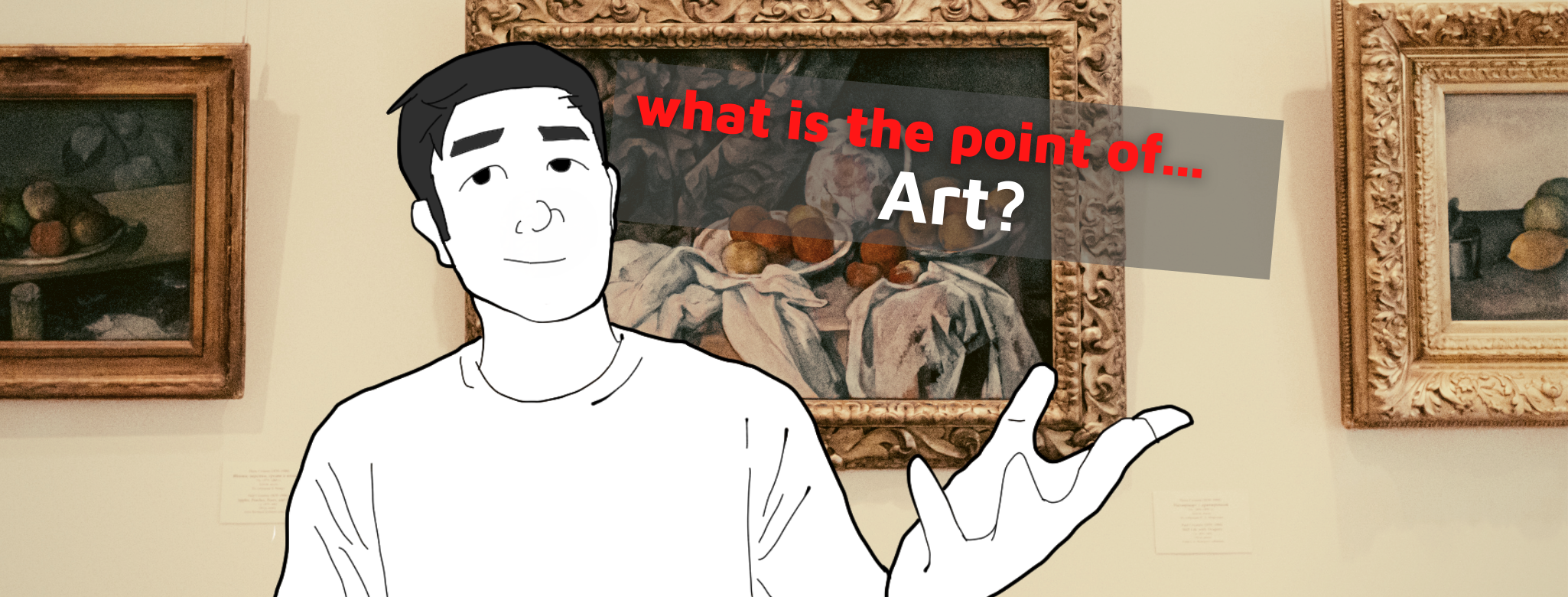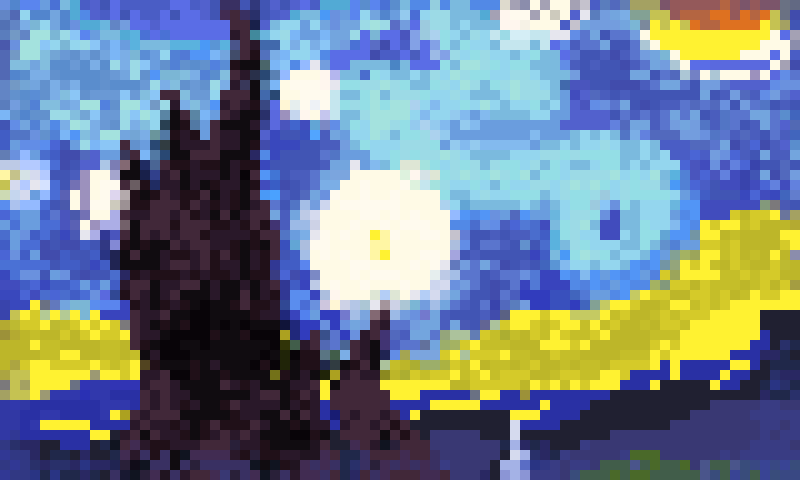 Posted on
09 May 2021,
in
Life Offline.
Posted on
09 May 2021,
in
Life Offline.
First I would like to preface that defining art is pretty much impossible. Art can be objective or subjective based on our personal preference towards it.
My Definition Of Art

The definition of what art is depends on the person. For me personally, I believe these definitions are the closest way that we can describe art.
- There is no generally agreed definition of what constitutes art.
- Art is an expression or application of human creative skill and imagination.
- Communicates our story and experiences in a way language is unable to.
- Stimulates our thoughts, emotions, beliefs, or ideas through our senses.
If you want a more in-depth look. The Wikipedia page is very informative on all aspects of Art.
Very Brief History of Art
Artistic works are as old as our need to communicate. The oldest form of art we’ve encountered is from the petroglyphs — rock carvings that allowed us to tell a story with one another to monument locations or teach one another. There is even a petroglyph that showed how we harvested honey from bees. This demonstrates the usefulness of art for human survival.

If we go forward in time, we see philosophers like Plato, Aristotle, Socrates and Kant questioned the meaning of art. Aristotle believed that art is about the imitation of what is around us. Music imitates rhythm and harmony, dance imitates rhythm, and poetry imitates language. This is easier to see when we consider the most well-known form of art — drawings. They imitate what we see or feel at a point in time and visualize it in a new creative way. Some may not like this definition from Aristotle and that’s absolutely okay. The meaning of art is not about the labels or categories we put them in. Art is about much more.
World Full Of Art
When hearing about art, we tend to think of museums and art galleries. This leads our mind to think that art is for wealthy or intelligent people. However, we know that this is not true. Art is for everyone — whether we consume it through music, movies, poems, theatre, dance or creative writing, they are all different forms of art. The main reason why we all enjoy art is because it feeds our emotions.
- Gives us hope, makes us feel less lonely, allows us to empathize and understand how others feel in a way words cannot fully express.
- Helps us learn to appreciate the seemingly mundane.
- Helps us to express what really matters to us.
- Changes our mood.
Art Defines Who We Are
Art is what makes us human, without it we would be dull and without emotion. A lot of dystopian books demonstrate the horrors of life if we were to just use logic and reasoning to do everything. Art is what makes life exciting and helps us connect with one another. For me, video games, tv shows, movies and music have created who I am today.
- Video Games - Allows me to appreciate the work of other, developers, artists and musicians.
- TV Shows/Movies - Allows me to peek into the lives of others and experience their stories.
- Music - Keeps me motivated during workouts and relaxed during coding sessions.
What art defines who you are?
Art Is A Meta-Skill
A meta-skill is a skill that enables us to learn other skills. By learning to create art, we give ourselves the power to handle criticism, reflect on ourselves and the world around us, and improve our storytelling. Art is also a learned skill which means that we do not need to be born with this skill. Sure there may be some who have natural talents, but even they wouldn’t get far with that alone. Learning art will not only teach us how to be great artists, but we’ll learn some great lessons along the way.
There Is No Such Thing As Perfection Or Imperfection
Art is never finished, only abandoned. - Leonardo da Vinci
Let’s get this straight because art is so subjective and personal, there is no real way to determine whether an art piece is perfect or not. Do we decide the value of an art piece based on popular opinion? We often do, but that does not mean that there is perfect and imperfect art. Our minds love to categorize the world around us and by doing so, we miss the intricacies of the smaller details. Through art, we learn to find the beauty in everything. The art we drew as kids may not be visually pleasing, but it bring us back to a time when we were young and innocent— and I think that is worth something.
Perseverance Through Negative Feedback

Handling criticism is one of the hardest but one of the most valuable skills we can learn. Recognize that we receive criticism throughout our lives, whether that be through family, friends, and mentors. They all have their own opinion on what our weaknesses are and how we can improve our lives — and it is how we react to them that makes the difference. By creating art, we are opening ourselves to the judgement of others which can shatter our confidence and motivation.
How To Handle Negative Feedback:
“The bitter truth we critics must face, is that in the grand scheme of things, the average piece of junk is probably more meaningful than our criticism designating it so” -Anton Ego, Ratatouille
- Recognize when someone is hating on our art purely because they are a hateful person and whether it truly matters to us or not.
- Figure out what negative feedback matters and what doesn’t matter.
- Learn that we can’t change how people think, but we can change how we respond to negativity.
- When creating art we are bound to make mistakes or see areas where we can improve. It may even feel endless as we keep iterating and iterating until the art is completely different than how it originally looked. Realize that we may be our own harshest critic and sometimes it’s best to stop iterating and move on.
Track Our Growth
The part of artists that inspires me is being able to see their growth over time. Artists often analyze their previous work and find ways that they would be able to improve it with the knowledge they have now. It is always important to keep reflecting on whether we are currently at the skill level we want to be.
Communicate With Storytelling
Language is probably the most powerful tool we use to communicate and yet it has limits. We have to go line by line, word by word to get any message across. Art helps to make our stories stick. It does not even have to be beautiful. As long as it makes us think, it is good enough. Even though we may not like one piece of art, we should always strive to learn why others may enjoy it so we can learn something new about them, and maybe even ourselves.
Resources
- What is art for? Alain de Botton’s animated guide - Art and design
- Why You Should Start Drawing
- What is Art?
- How drawing helps you think - Ralph Ammer - TEDxTUM
- Why art is important - Katerina Gregos - TEDxGhent
- How to Handle Criticism, Gumball Style
- Art is Hard
- The Final Episode of Courage the Cowardly Dog is Perfect
